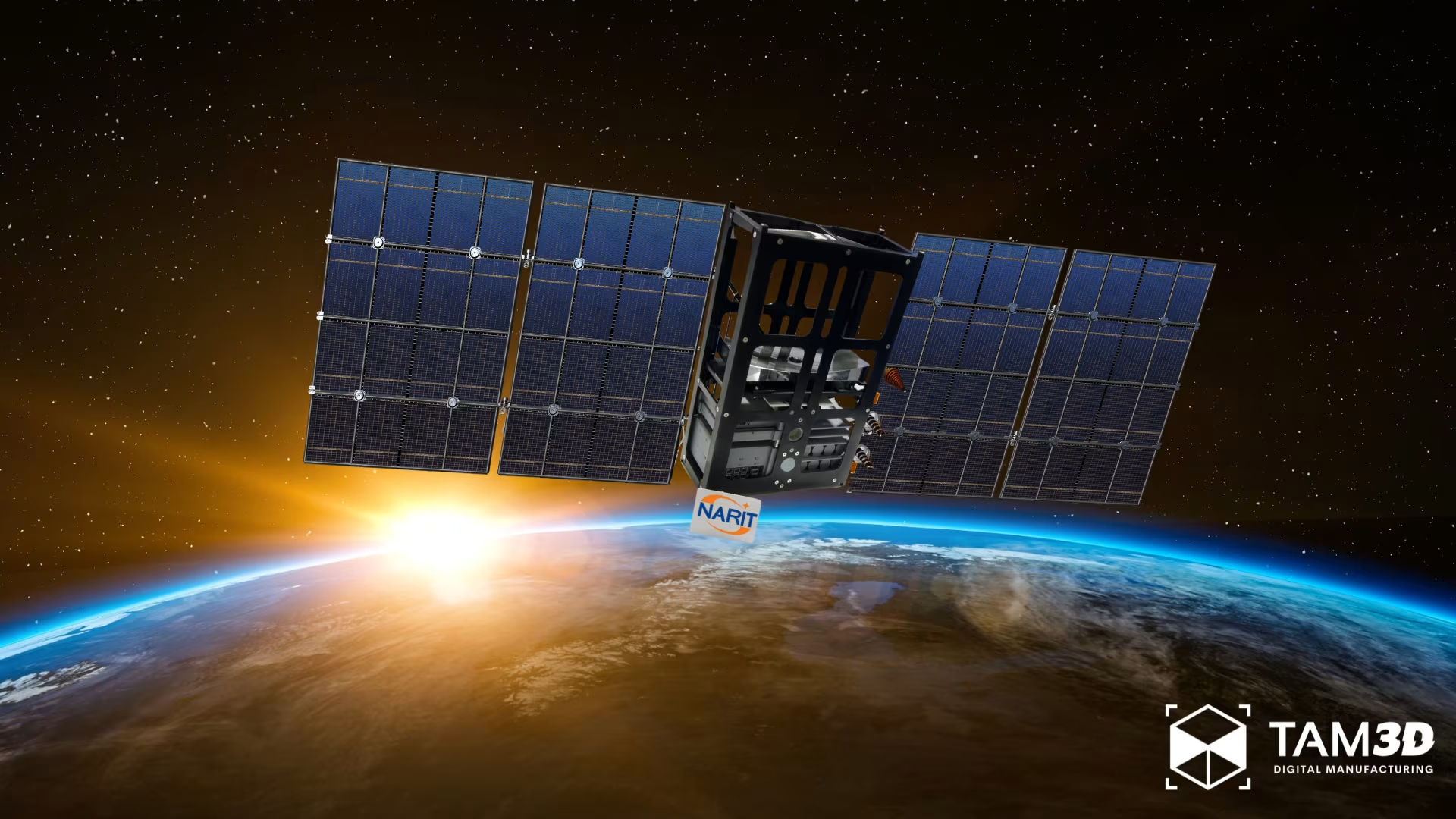
Navigating the Tariff Landscape with TAM3D | Learn More

Getting a spacecraft ready for orbit isn’t just rocket science - it’s precision engineering on Earth. When the National Astronomical Research Institute of Thailand (NARIT) set out to develop its next-generation CubeSat platforms, they needed a manufacturing partner who could deliver high-precision aerospace parts with tight tolerances, rapid lead times, and space-grade quality.
That’s where TAM3D came in.
NARIT’s CubeSat program aims to advance Thailand’s capabilities in space-based observation, communication, and scientific research. The CubeSat frames - 3U and 6U configurations - serve as the structural backbone, housing payloads for space weather detection, Langmuir probes, and other scientific instruments.
Every component had to meet aerospace-grade standards for weight, strength, and thermal stability — all while withstanding the harsh vibrations of rocket launch and the extreme temperature cycles in Low Earth Orbit (LEO).
By uploading CAD models to TAM3D’s instant quoting platform, NARIT’s engineers could see manufacturing costs, lead times, and feedback within minutes - speeding up the entire R&D cycle.
Building CubeSat frames isn’t just cutting metal. It requires:
TAM3D employed 5-axis CNC machining to achieve complex geometries with fewer setups, ensuring structural accuracy down to ±0.02 mm tolerances.
In the early phases, TAM3D delivered rapid prototypes for fit and vibration testing. Once validated, the same production workflow scaled up to flight-ready frames.
Thanks to this agile manufacturing partnership, NARIT successfully assembled its CubeSat platforms - now serving as testbeds for Thailand’s growing space research ambitions.
TAM3D’s work didn’t just help build satellites; it helped build national capability in space engineering.
With this success, TAM3D is continuing to support aerospace and research organizations in rapid prototyping, flight hardware manufacturing, and mission-ready part delivery. Whether for Earth observation, communications, or deep space science — we’re ready to help turn your CAD file into a spacecraft component.